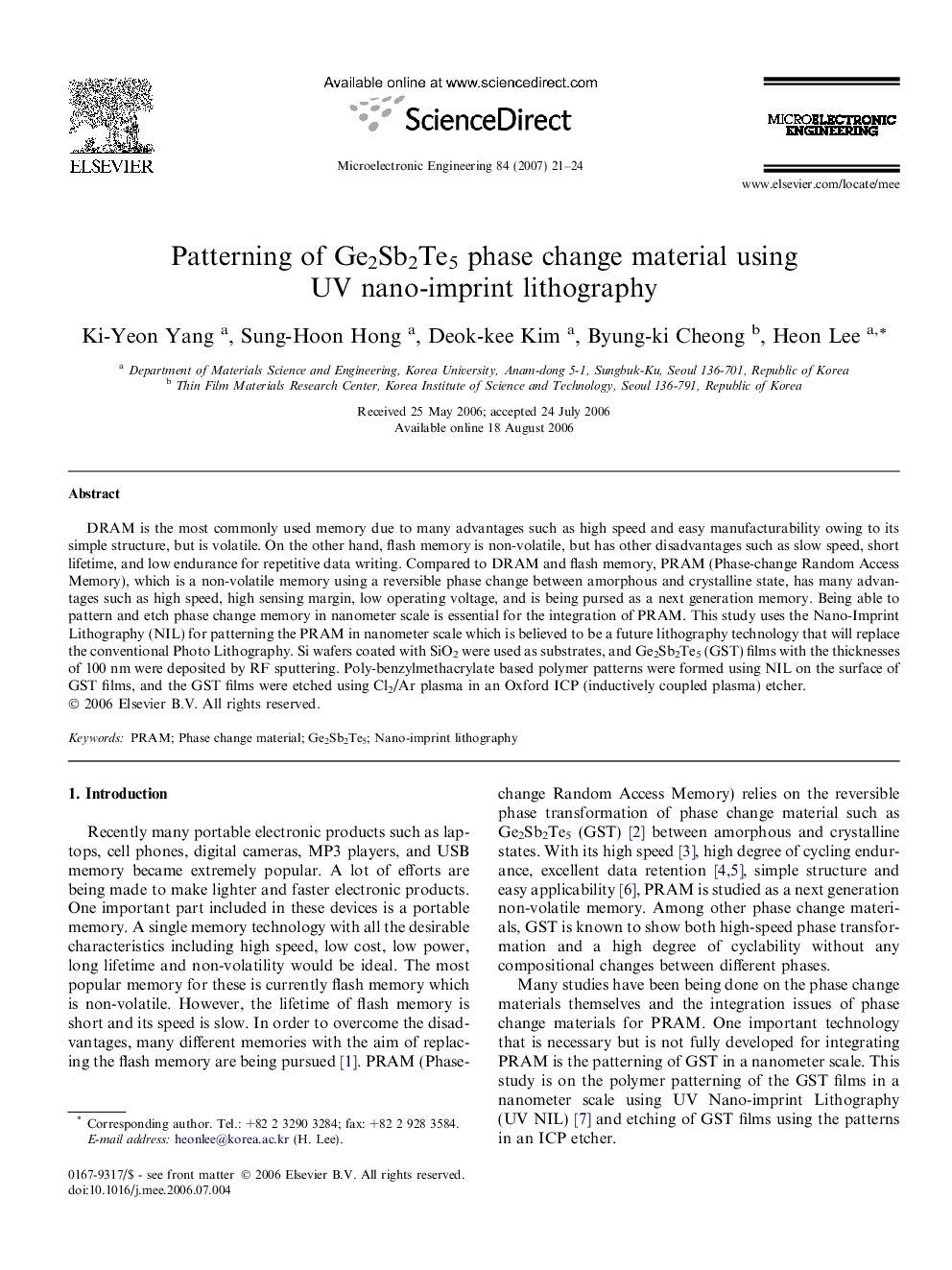| Article ID | Journal | Published Year | Pages | File Type |
|---|---|---|---|---|
| 540832 | Microelectronic Engineering | 2007 | 4 Pages |
DRAM is the most commonly used memory due to many advantages such as high speed and easy manufacturability owing to its simple structure, but is volatile. On the other hand, flash memory is non-volatile, but has other disadvantages such as slow speed, short lifetime, and low endurance for repetitive data writing. Compared to DRAM and flash memory, PRAM (Phase-change Random Access Memory), which is a non-volatile memory using a reversible phase change between amorphous and crystalline state, has many advantages such as high speed, high sensing margin, low operating voltage, and is being pursed as a next generation memory. Being able to pattern and etch phase change memory in nanometer scale is essential for the integration of PRAM. This study uses the Nano-Imprint Lithography (NIL) for patterning the PRAM in nanometer scale which is believed to be a future lithography technology that will replace the conventional Photo Lithography. Si wafers coated with SiO2 were used as substrates, and Ge2Sb2Te5 (GST) films with the thicknesses of 100 nm were deposited by RF sputtering. Poly-benzylmethacrylate based polymer patterns were formed using NIL on the surface of GST films, and the GST films were etched using Cl2/Ar plasma in an Oxford ICP (inductively coupled plasma) etcher.
